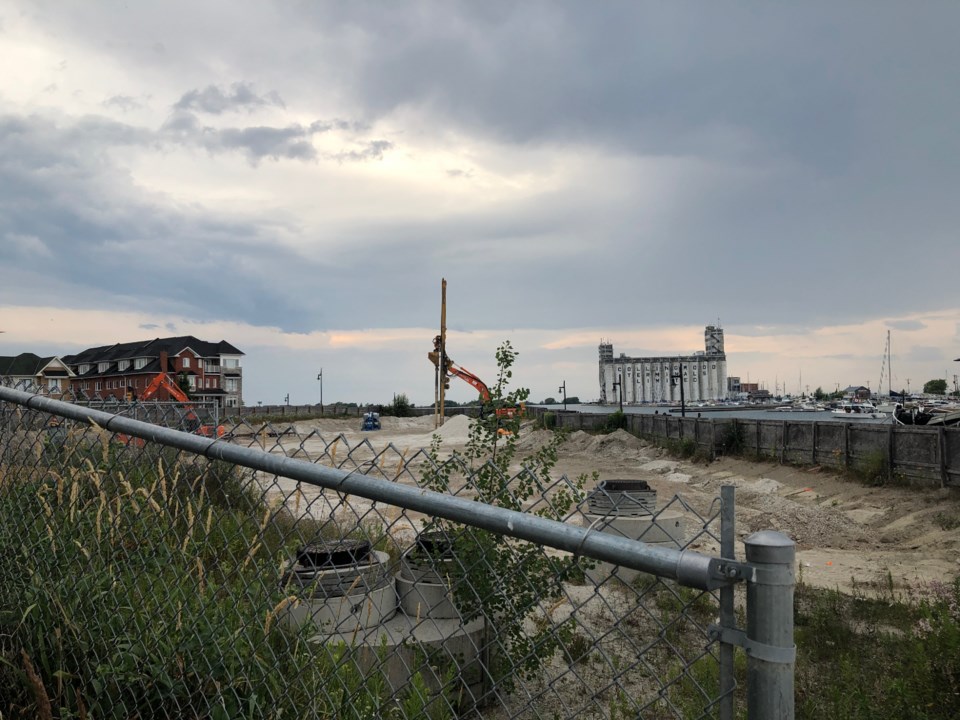Housing options in Collingwood are, officially, one of the most talked-about issues for the town’s official plan review.
That’s according to one of the consultants hired to help the town draft a new official plan, which is intended to guide growth and development in the town over the next 15 to 20 years.
Ron Palmer is the lead consultant for the review and he made a presentation to council ahead of releasing a draft report with recommendations based on what he’s learned so far.
“Key themes and values are emerging that are going to inform the preparation of the official plan,” Palmer told council on Nov. 23. “Housing options … was one of the most talked about issues.”
In his research, Palmer began to see a trend in Collingwood’s housing market.
“There’s a significant dependence on low-intensity, single, detached, and very expensive housing,” he said.
As a result, Collingwood’s average home price is high.
“I was stunned to find out how expensive you are relative to other municipalities in Southern Ontario,” said Palmer.
It’s something, he noted, the town’s new official plan should address.
“The goal is to try to broaden the requirements for a mix of housing,” he said. “We need to put some definition around affordable, attainable, accessible housing and ensure we’re getting more of all of it.”
He said in order for the municipality to meet its affordable housing targets, it first needs to set those targets, then apply tools via the official plan to achieve it.
The official plan has been broken down into eight topics with recommendations and upcoming public sessions for each.
The topics include growth management, sustainable development, housing, community design, natural heritage system, downtown and waterfront, transportation, and municipal infrastructure.
“In an official plan, we have lots of options,” said Palmer. “We’re going to be making thousands of decisions about what we want to regulate and how we want to regulate it. And what is the level of control the municipality, first of all, is allowed to exert, and secondly, wishes to exert. Sometimes that means telling yourself what to do.”
For each of the topics, the consultant’s report makes recommendations for changes for the level of control the town currently has in those areas.
Under the topic of growth management, the report recommends more specifically identifying areas of the town that can become “urban centres and corridors.” Those areas could then be promoted as potential sites for taller, higher-density buildings.
For sustainable development, the report suggests the town include a specific section in the official plan to encourage green building technologies in new developments.
Housing is one of the larger list of recommendations, which include more strict and specific controls requiring a mix of housing, and policies that focus directly on affordable housing and meeting targets for affordable housing units in town.
The report includes several proposed changes to the town’s approach to community design including heritage conservation. The recommendations include more “forcefully” promoting the concept of compatible development through specific definitions. The consultant suggested the town could update its urban design manual and increase its strength by adding elements of it to the official plan and zoning bylaws, which are regulatory documents.
When it comes to heritage conservation, the consultant also recommended more regulations, but with a goal of compatibility, not mimicry, with the town’s heritage features.
Palmer suggested the town’s goal should be to balance what’s important from a heritage perspective with incorporating new development appropriately.
The report recommends a change to the town’s regulation of downtown development to encourage diversity of uses in the downtown. For example, the report suggests rather than focusing on the downtown exclusively as a commercial hub, the official plan allow for intensified residential, and office/employment that is in keeping with the “downtown experience.”
“This would involve building on the concentration of institutional, cultural, recreational, entertainment and retail/commercial uses, as well as connections to the water, heritage character and high-quality public realm,” states the report.
You can read the full report here.
The town will be hosting several community workshops (one for each of the eight topics in the official plan review) on Nov. 30 and Dec. 1. You can register to participate in the virtual events on the town’s website here.
For more on the town’s official plan review process, to provide comments and suggestions for the future plan, and to read discussion papers detailing public feedback so far, visit Engage Collingwood.


